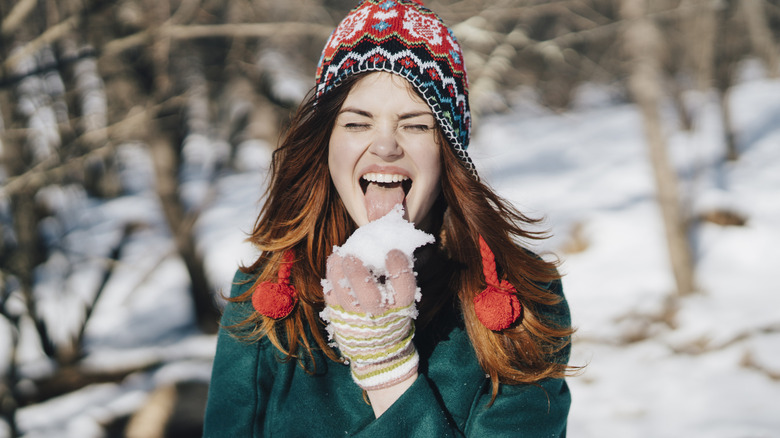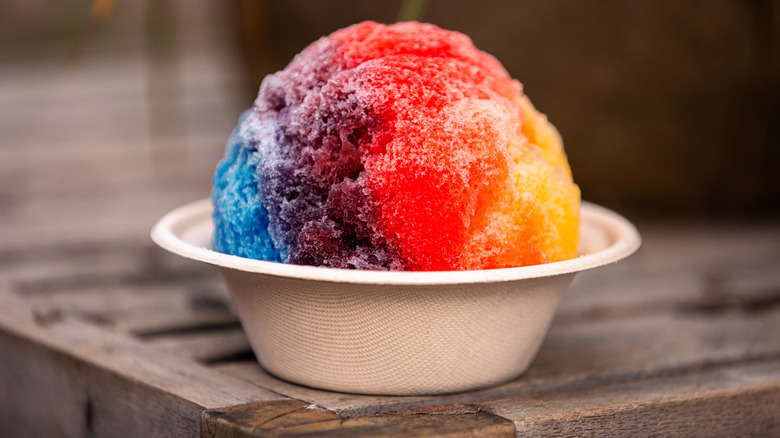Why You Should Think Twice Before Eating Snow
Snowfall is one of those events that interrupts the mundane and reminds us of the magic of everyday life. Sometimes, it encourages us to indulge children (and maybe our inner child) in some snowy fun as an escape from normality. However, despite how surreal the experience of snow may feel, the very real consequences of eating certain types of snow are important to keep in mind. Experts have long debated the risks associated with eating snow, and there are specific circumstances where you might want to skip the "snow cream" altogether.
Snow is enjoyable — unless it starts to affect your health. With bacteria present both in the air and on the ground, even the "freshest" snow can pose health risks if ingested. As snow falls, it has the ability to trap air pollutants, such as black carbon and car emissions — something many city dwellers are well aware of.
A 2020 study published in Environmental Science & Technology demonstrated that even the most "pristine" regions of the world contain traces of pesticides and pollutants in the snow, so your hometown is likely no exception. Once snow settles on the ground, it may absorb undesirable toxins, ranging from pesticides to animal waste. Even if you believe that being the first one outside to collect the freshest snow will protect you, it may actually be worse. The first hours of snowfall tend to attract microplastics and other unwanted impurities. Yikes!
How to minimize risk while enjoying snowy treats
Of course, there will be moments when you want to let nostalgia take over and taste a little snow. If that's the case, there are ways to do so safely. Always ensure that the snow you plan to eat isn't discolored — gray, brown, or yellow snow has no place on your tongue. Plowed snow may also contain pollutants and toxins that can be harmful. It's also super important to be mindful of any traces of animal footprints, bird feathers, or other disturbances on or near the snow. In general, you want to minimize the risk of scooping up snow that could be contaminated or harboring bacteria from the ground. If you're not careful, this could lead to unpleasant illnesses like stomach bugs, various strains of food poisoning, or even E. coli. The nasty bellyaches that follow won't be worth the snowy fun.
The good news is that you can easily forgo the snow and still satisfy your cravings. If you're in the mood for some wintry fun, consider whipping up an old-school treat like Appalachian snow cream or Hawaiian shave ice without using snow — simply opt for blended or homemade shaved ice instead. Both types create a powdery consistency that mimics traditional snow quite well. The best part? You can throw this together for friends and little ones using ingredients you probably already have in your pantry.


